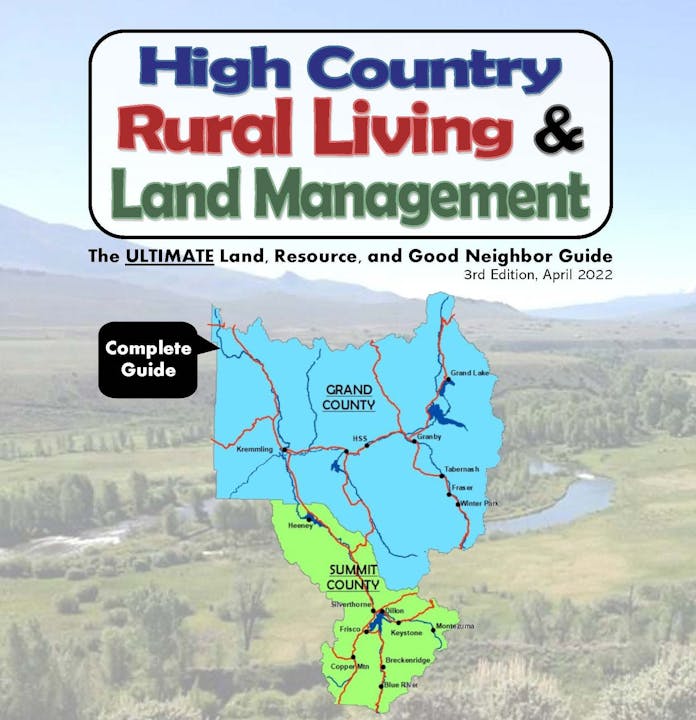Ranchers & Livestock Owners - Wildfire Planning
Ranchers & Livestock Owners - Wildfire Planning

Livestock operations are at high risk from wildfires because of their more remote locations and the generally lighter fuels (vegetation) on grazing land that can carry an advancing wildfire very quickly. It is often impossible for many ranchers to evacuate their livestock due to the number of animals they have or their location on the property. Because of these things, ranchers must work diligently to prepare their property and make evacuation and contingency plans for both people and livestock.
In the case of livestock operations, it is often not feasible to evacuate large numbers of livestock. As a result, operators should consider establishing relatively safe havens for their animals. One way this can be accomplished is through rotational grazing.
Intensive-managed grazing near ranch houses, barns or equipment areas can provide defensible space for those assets and create an area where livestock can be held away from the main body of the fire. Remaining vegetation in well-grazed areas will not usually carry a fire and spot fires can be easily controlled. By using grazed pastures as defensible space during high fire season, livestock operators can then open gates should a fire occur to allow livestock to transition from pastures where they are feeding to the grazed area where they can be better protected.
Prepare in Advance
- Know the fire history and typical fire behavior for the area. Concentrate preparations on areas of the ranch where a fire is most-likely to approach.
- Establish and maintain firebreaks around pastures.
- Create defensible space around all structures, including barns and hay sheds.
- Reinforce fences with metal posts, if necessary.
- Create a safe zone clear of all vegetation for ranch equipment.
- Clear vegetation around fuel tanks.
- Create a Livestock Evacuation Plan
- Ensure proper branding and registration of livestock.
- Establish a contingency plan for feeding livestock if grazing land is destroyed by fire.
- Have spare gate keys, combinations and property maps available for firefighters, or leave gates unlocked.
- Clearly mark water tanks, ponds and other water supplies available for fire department use.
- Reinforce bridges to make them capable of supporting the weight of a fire engine or bulldozer and clearly mark weight limits or unsafe bridges. Mark alternate paths around the bridges if they are incapable of supporting heavy equipment.
What to do when wildfire is approaching
- Open and/or unlock gates so livestock can escape flames and firefighters have easier access. If time allows, relocate livestock to ranch areas with lighter fuels or with well-maintained firebreaks or other defensive measures.
- Hook up and load stock trailer to evacuate particularly valuable animals (saddle horses, breeding stock, etc.) when necessary.
- Move equipment into a safe, non-vegetated area.
- Close all doors and windows and turn ON lights in barns and other structures.
- Shut off propane tanks.
- Ensure all water source connections/locations are identified and operational.
- Evacuate family members, pets, valuables and other personal possessions to a safe area as soon as possible.
- Monitor property for small fires started by embers.
- Monitor manure piles and hay storage.
- Leave if the fire threatens your own life and safety.
References
- Ready, Set, Go! Wildfire Preparedness for Farmers, Ranchers, Growers. https://vcfd.org/wp-content/uploads/2020/02/RSG-Agricultural.pdf
Other Livestock/Wilfire Resources
Emergency Conservation Program for Ag Producers (FSA)
Cattle Care After Wildfires (Texas A&M)
Caring for Horses After Wildfire (Texas A&M)
Checklist of Considerations for Post-Fire Management (Texas A&M)
Fires & Wildfires (Texas A&M AgriLife Extension)
Caring for Livestock During Disaster (CSU Extension)
Caring for Livestock After Disaster (CSU Extension)
Colorado Hay Resources (Colorado Dept of Ag)
Guidelines for Horses Exposed to Wildfire Smoke (UC Davis Vet Med)
Wildfires, Smoke and Livestock (UC Davis)
Saving Pets, Saving People (CSU Extension)

